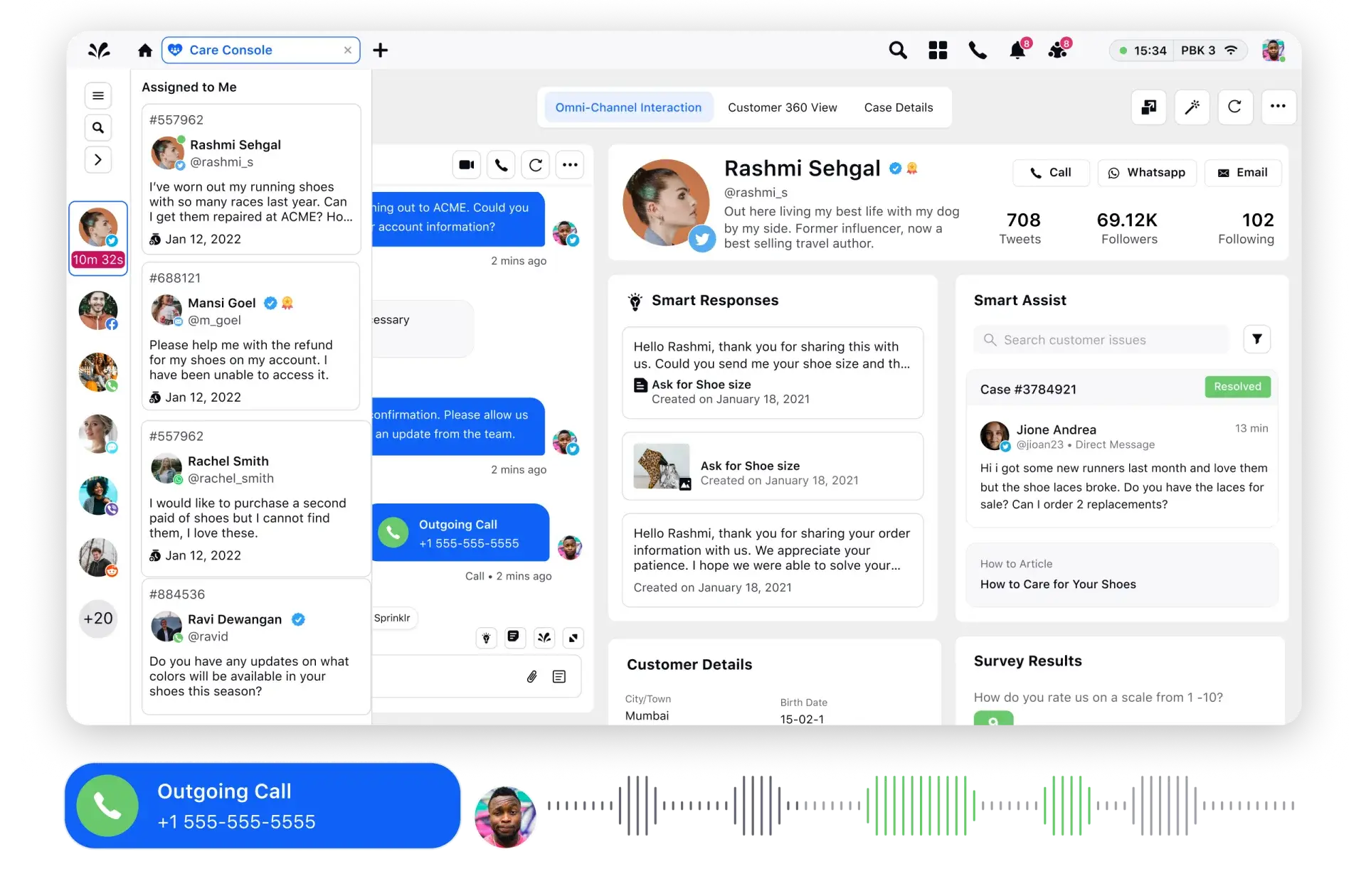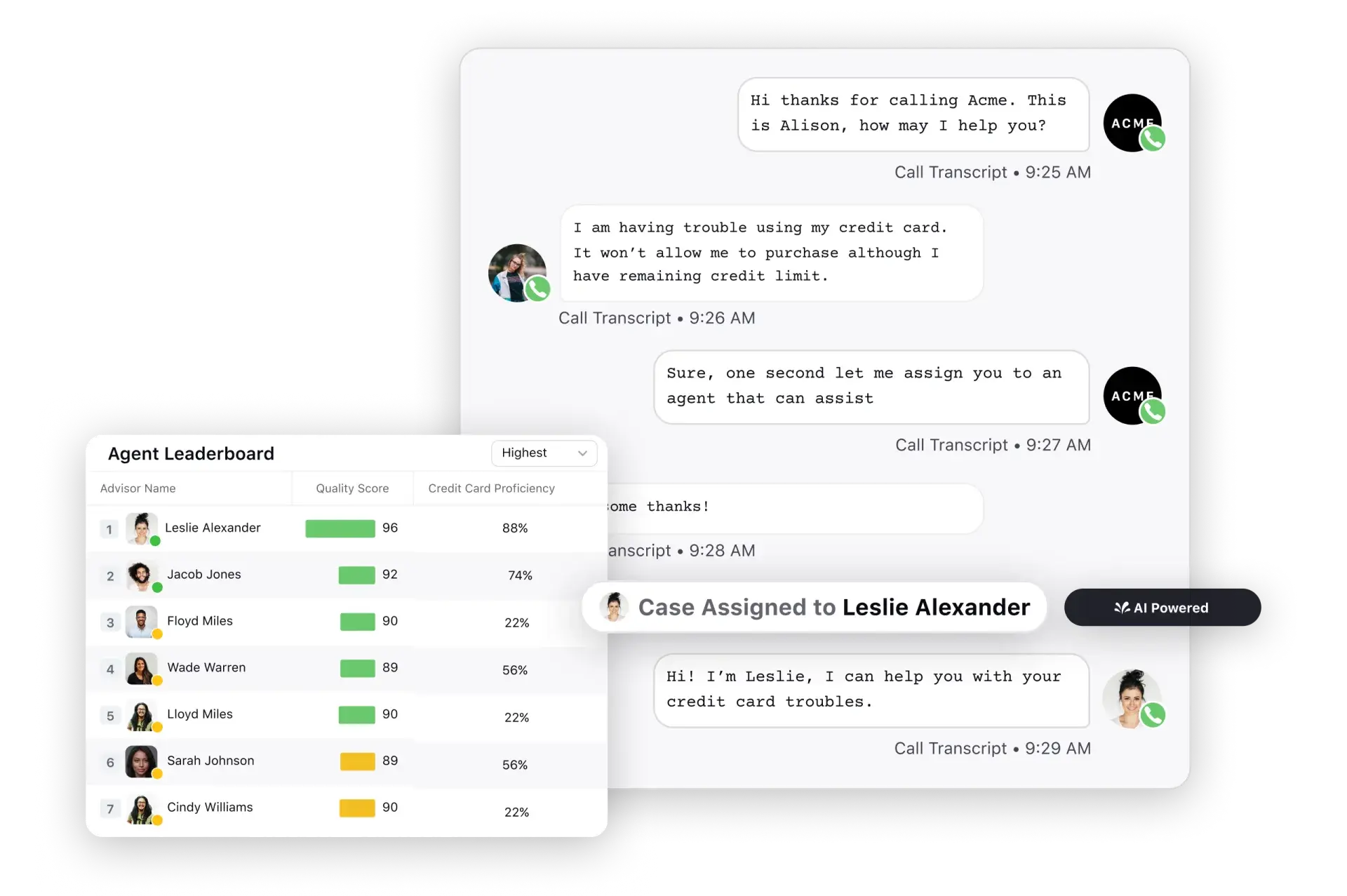Today, customer-business interactions have become inherently personal, with platforms like WhatsApp emerging as critical channels for customer service.
Recent CX statistics underscore the significance of this shift. They reveal that 77% of consumers have chosen, recommended or paid more for a brand that provides personalized customer service or experience. Furthermore, 74% of customers are willing to exchange personal information for tailored services.
It's a binary equation—either you get personalized customer service right or not. There's no middle ground. However, if executed effectively, personalized customer service offers a competitive advantage.
This blog aims to help you harness the power of personalized customer service. We'll explore where to start, explore real-world examples across industries and present an 8-step actionable plan for delivering personalized customer service.
What is personalized customer service?
Personalized customer service represents a tailored approach to supporting and interacting with customers to address their unique needs and preferences. It transcends the traditional view of customers as mere data points, recognizing them as individuals with distinct histories and requirements. This level of customization is achieved by integrating customer data with contact center CRM systems, enabling a 360-degree view of individual customer journeys.
While digital customer service has expanded the scope of customer engagement, the lack of omnichannel routing and incomplete implementations often result in transactional interactions devoid of personal touch, ultimately leading to disjointed customer experiences.
Key stakeholders, including customer service representatives, marketing teams, IT departments, data analysts and senior management, play crucial roles in ensuring the success of personalized customer service initiatives. However, the real challenge lies in data management and integration, as businesses must navigate privacy concerns and harness disparate data sources to create unified customer profiles.
Why is personalized customer service important for your brand?
Personalized customer service has become an imperative for brands, aligning closely with customer expectations. According to McKinsey, a staggering 78% of consumers are more likely to become repeat buyers if a brand personalizes communication, emphasizing the pivotal role of personalization in building customer loyalty.
Beyond repeat purchases, personalized customer service offers a myriad of benefits for brands:
Enhanced customer satisfaction: By actively listening to customers, understanding their pain points and offering tailored solutions, personalized customer service creates a sense of being heard and valued. This fosters positive customer sentiments towards the brand and cultivates long-term loyalty among customers.
Increased customer engagement: Positive experiences with personalized service strengthen brand recall, prompting customers to engage more frequently. Whether exploring new offerings, inquiring about loyalty programs or seeking the latest promotions, personalized interactions drive ongoing engagement and brand affinity.
Higher conversion rates: Personalized customer service satisfies customers and accelerates conversion rates. When customers feel valued and supported throughout their contact center customer journey, they are more inclined to make a purchase, appreciating the effort the brand invests in addressing their needs.
Competitive advantage: In an era of fierce competition and limited product differentiation, personalized customer service emerges as a powerful differentiator. Investing in high-touch customer service delivered by well-trained representatives streamlines interactions and cultivates a strong brand perception that is challenging for your competitors to replicate or undermine.
8 Tips to deliver personalized customer service and build trust
To effectively deliver personalized customer service, it's essential to show customer empathy and envision the kind of service you would appreciate in their shoes. Below are key strategies and proven techniques that can be swiftly implemented across industries to deliver personalized customer service.
👥 Bring the human touch
Personalized customer service begins with empathy and attentiveness. Start by addressing customers by their names—this simple gesture fosters a sense of familiarity and connection. Next, create a comfortable environment where customers feel encouraged to open up. Remember, not all customer inquiries will be straightforward. Train contact center agents to listen attentively, extract key information from the customer's narrative and summarize it concisely for effective resolution.
📊Leverage customer data wisely
To deliver personalized customer service, it's crucial to harness the power of customer data effectively. Ensure you have a comprehensive view of customer touchpoints, past interactions and purchase history. This enables you to predict customer needs, identify pain points and steer conversations towards logical and solution-oriented outcomes.
For instance, in the e-commerce space, leveraging customer interaction analytics allows for accurate product recommendations, enhancing the browsing experience and expediting the buying cycle.
Here's a breakdown of different types of customer data and their benefits:
Type of data | What it covers | How it helps |
Transactional data | Purchase history, purchase frequency, average order value | Understanding spending behavior |
Interaction data | Website visits, mobile app usage pattern, social media engagement, email engagement, service inquiries | Gives a comprehensive view of the customer journey |
Survey and feedback | Product or service usability, time to value and overall experience | Gauging customer satisfaction and identifying areas of improvement |
Customer reviews, ratings, conversations | Understanding public perception of your brand |
💡Do you know: Data accessibility and visibility are two distinct challenges for customer service representatives? Often, they find themselves juggling between screens, customer service channels and platforms to gather customer data, wasting precious time in the process.
Enter the modern unified agent console — a game-changer for customer service teams. By consolidating multiple channels onto a single screen, streamlines the customer service workflow and significantly reduces average handle time (AHT) by up to 30%.

👫Segment customers
After collecting comprehensive customer data, the next step is customer segmentation. Divide your customer base into distinct groups based on specific criteria to create customer service strategies. Here are the key types of segmentation:
Behavioral segmentation: It focuses on how customers interact with your brand, including their purchase patterns, product usage and engagement levels. It helps understand customer habits and preferences.
Psychographic segmentation: This involves categorizing customers based on their lifestyles, interests, attitudes and values. Psychographic segmentation is helpful in creating deeply personalized service experiences.
Demographic segmentation: This entails dividing customers based on demographic factors such as age, gender, income, education and occupation. It is often the starting point for audience targeting.
Geographic segmentation: This type segments customers based on location, such as country, region, city or neighborhood. It is particularly useful if you offer location-specific services or products.
Customer lifecycle segmentation: This approach divides customers based on where they are in their relationship with your brand, such as new customers, repeat customers, loyal customers or at-risk customers. Understanding customer lifecycle management is crucial for providing relevant and timely service.
🤖 Utilize technology
In pursuing personalized customer service, technology plays a pivotal role in enhancing service delivery. AI-powered customer service chatbots, virtual agents and conversational AI are some of the popular tools you can use to deliver personalized customer service at scale. These tools are available 24x7, engage customers on a personal level and seamlessly connect them to live agents when queries exceed their capabilities.
💡Pro tip: When choosing customer service software, prioritize platforms that offer robust integration capabilities. Seamless integration with your existing systems, such as CRM and communication channels, ensures a unified view of customer interactions, streamlines workflows and enhances the overall efficiency of your customer service operations.
📲Implement omnichannel support
Offering seamless customer support across multiple channels is crucial in today's interconnected world. By providing services through phone, email, live chat, social media and in-person interactions, you deliver meaningful and integrated customer experiences.
However, the challenge here is to enable seamless switching between channels while maintaining context and continuity. Omnichannel routing ensures that all customer interactions, regardless of the contact center channel, are tracked and managed cohesively, allowing for more efficient and personalized customer service.
Good to know: Modern omnichannel routing software utilizes AI to detect and analyze customers' intent and sentiment across voice and digital conversations. Accordingly, it creates omnichannel routing workflows that assign cases to the best-suited agents based on skills, capacity, historical utilization and more.

💬Embrace proactive engagement
Imagine you're a subscription-based meal delivery service catering to health-conscious individuals with busy lifestyles. Instead of waiting for customers to reach out with dietary concerns or preferences, you proactively gather insights from their past orders, feedback and health profiles.
Based on this data, you send personalized recommendations and tips to help them optimize their meal plans and achieve their health goals. For instance, if a customer consistently orders vegetarian options, you might send them an exclusive offer for a new plant-based recipe book or a curated selection of protein-rich vegetarian meals.
Furthermore, leveraging predictive analytics, you anticipate when customers might be nearing the end of their subscription period or experiencing dietary fluctuations (such as during a holiday season). During these critical moments, you reach out with timely reminders, special promotions or curated menus tailored to their preferences.
💼Train and empower your team
Equip your customer service team with the knowledge base and autonomy to deliver personalized customer service. Offer customized training to ensure your teams are well-prepared to tackle the distinct challenges and scenarios your customers encounter.
💡Pro Tip:
Encourage your customer service team to engage in regular role-playing exercises where they simulate various customer service scenarios and practice delivering personalized solutions. These scenarios should mirror real-life situations your team encounters daily, allowing them to hone their skills in understanding customer needs and providing tailored assistance.
During these exercises, emphasize the importance of active listening and empathy. Encourage team members to ask probing questions to uncover underlying concerns and preferences. By immersing themselves in these scenarios, your team can better anticipate customer needs and respond with personalized solutions effectively.
📈Measure and adapt personalization strategies
No initiative is complete without continuous measurement and course correction if things go awry. In fact, measurement is a vital part of the customer service personalization process.
To ensure your customers are happy and their tribe grows, you need to regularly run customer surveys and analyze performance data to understand what works and what doesn’t. This will enable you to fine-tune your efforts for maximum impact.
Deliver personalized customer service seamlessly with Sprinklr
As customer expectations evolve, it's essential to meet their demands for tailored experiences that resonate on a personal level. While challenges like data management, omnichannel engagement and resource constraints are well-known, delivering personalized customer service at scale is achievable and transformative for your business with the right tools and strategies.
By harnessing the power of platforms like Sprinklr Service, you can streamline customer service operations, centralize customer data and empower your team to deliver exceptional experiences at every touchpoint. How about not taking our word for it and witnessing it yourself?
Frequently Asked Questions






